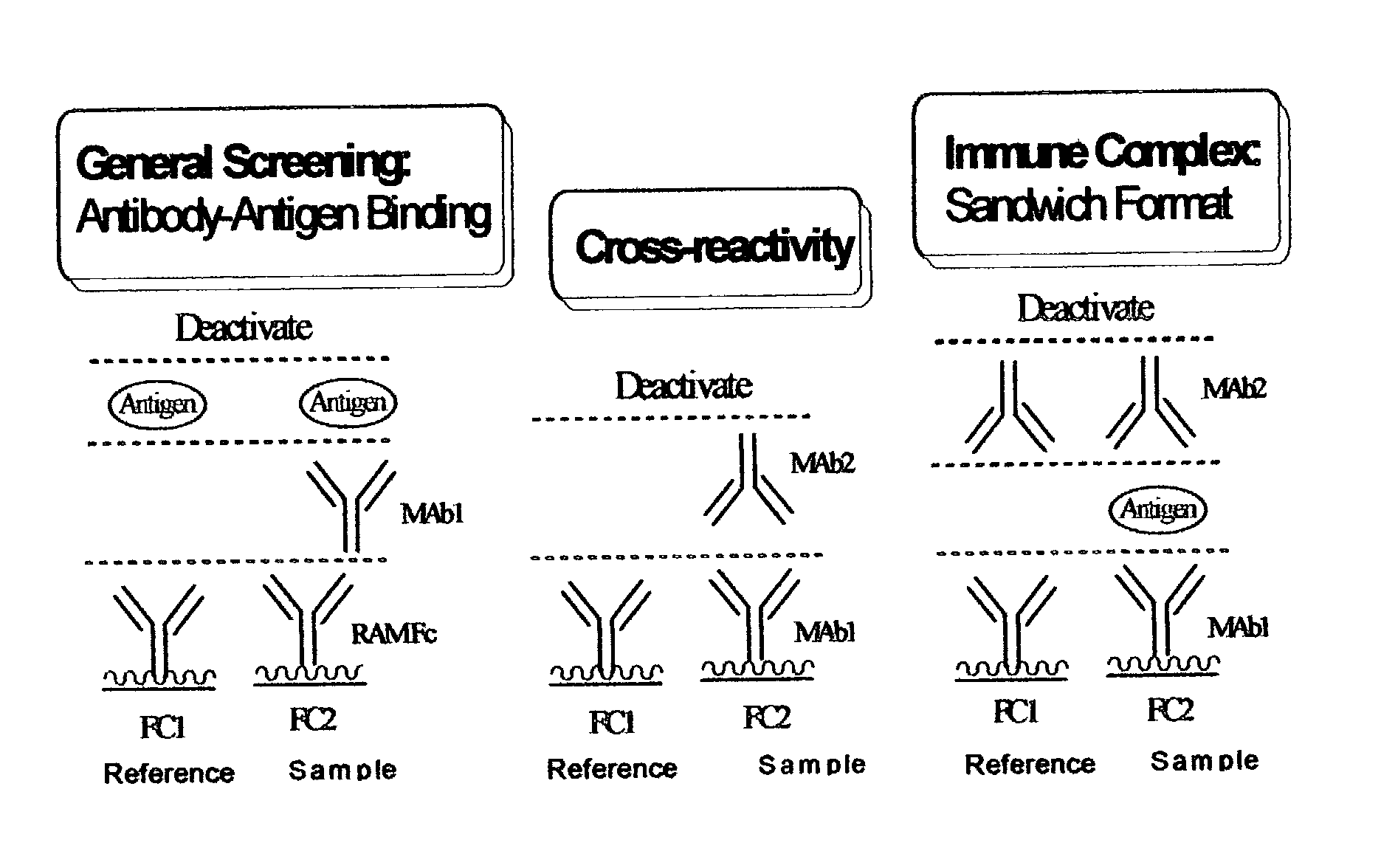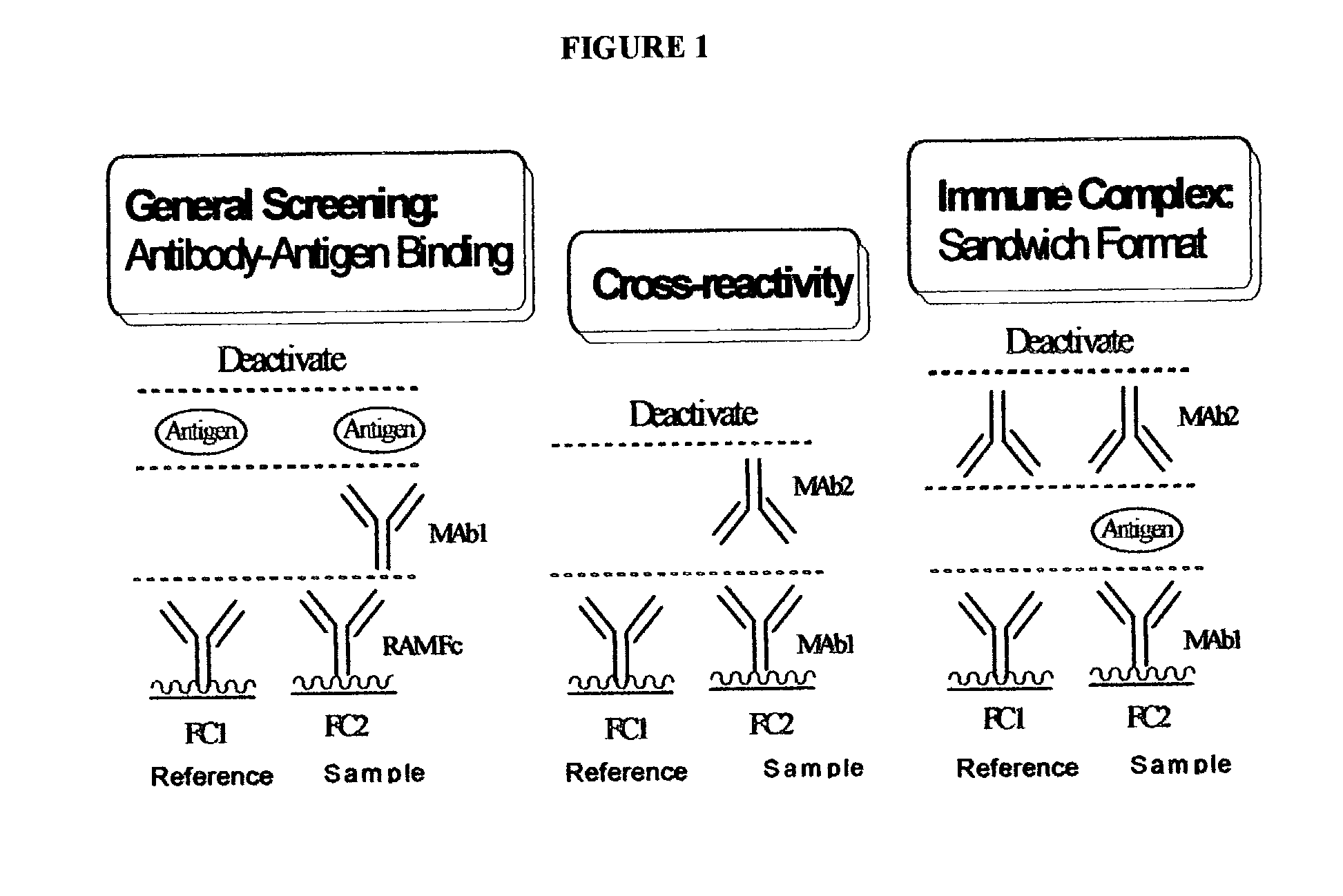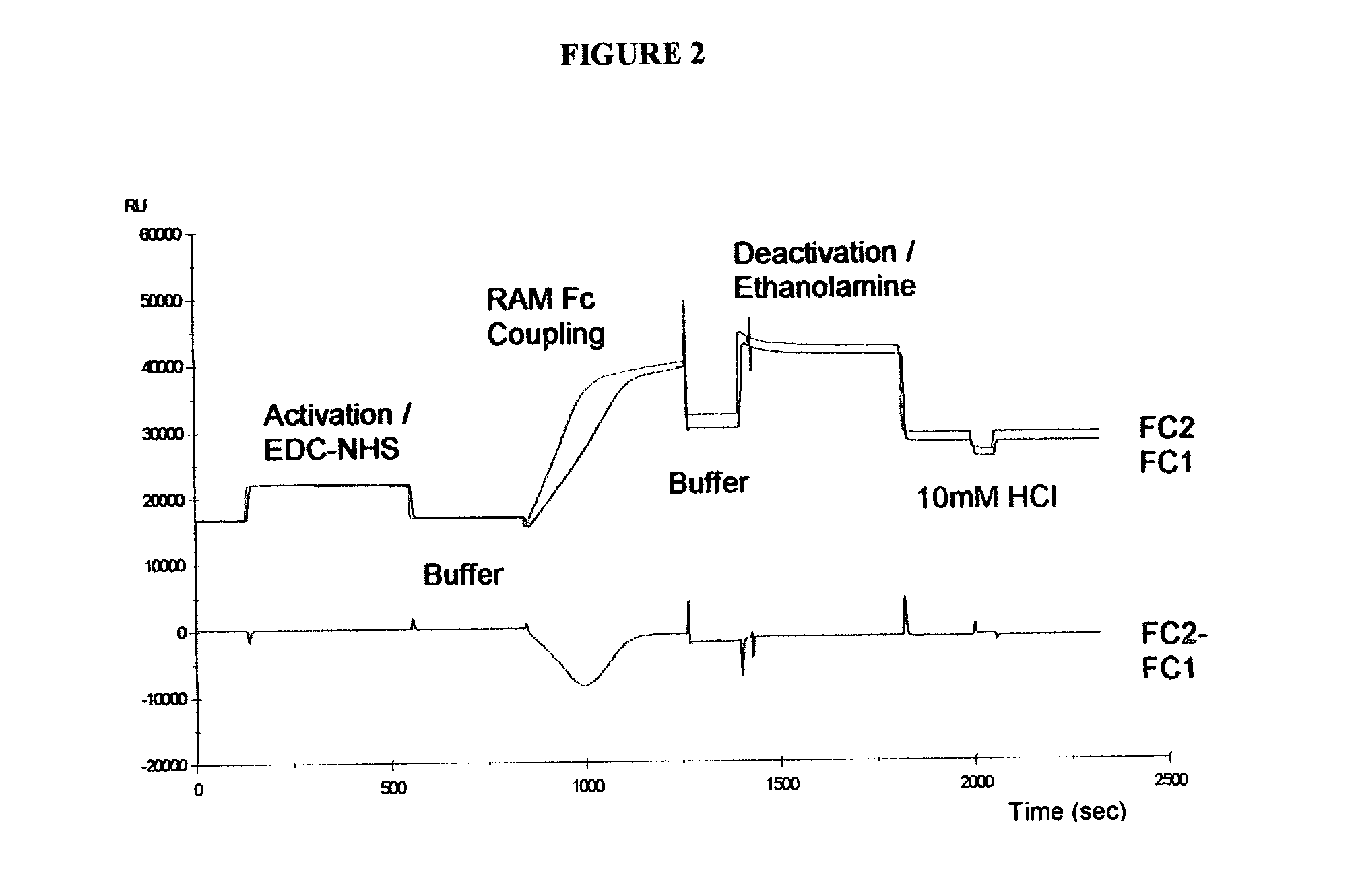Antibody pair screening methods
a technology of antibody-antigen interaction and screening method, which is applied in the field of antibody-antigen pair screening methods, can solve the problems of insufficient sensitivity of antibody-antigen interaction in the lower portion of the affinity range for accurately measuring, and the inability to monitor assays continuously,
- Summary
- Abstract
- Description
- Claims
- Application Information
AI Technical Summary
Benefits of technology
Problems solved by technology
Method used
Image
Examples
example 1
Materials and Methods
[0094]This Example describes the materials and methods used for identifying the best antibody pairs for detecting C-reactive protein and immunoglobulin E.
Materials
[0095]Surface plasmon resonance (SPR) measurements were performed using a Biacore X and sensor chip CM5, purified rabbit anti-mouse Fc-specific IgG (RAM Fc), and an amine coupling kit for immobilization that was obtained from Biacore. SPR response was measured in resonance units (RU), which are indicative of SPR angle change, where 1000 RU corresponds to an angle change of about 0.1°. All experiments were performed at 25° C., unless otherwise specified. The antigens and antibodies for CRP and IgE were obtained from various sources, and serial numbers based on catalog and lot numbers (see Tables 1 and 2).
Methods
[0096]General Procedure for Antibody Immobilization on Gold Chip Surface: Measurements were made on a Biacore X SPR system and all experiments were carried out using a running buffer of 10 mM HEP...
example 2
Selecting an Antibody Pair for Immunoassay of C-reactive Protein
[0106]In order to develop an immunoassay for C-reactive protein (CRP), the best pair of antibodies and the best antigen should be used. Several monoclonal anti-CRP antibodies and antigens were obtained from various sources, including the sources listed in Table 1. All anti-CRP antibodies and antigens were screened on RAM Fc immobilized biosensor chip, as described in Example 1 and one high affinity anti-CRP antibody (MAb#2) was 15 selected for immobilization on a CM5 chip using amine coupling chemistry. The cross-reactivities and immune complex affinities of the MAb#2 antibody were also determined in assays against each available anti-CRP antibody preparation, as described in Example 1. The specific affinity of immune complexes was calculated by subtracting cross-reactivity from the antigen affinity of each CRP antibody. These data are shown in Table 1 and FIG. 6.
[0107]
TABLE 1Percent formation of immune complexof variou...
example 3
Selecting an Antibody Pair for Immunoassay of IgE
[0109]IgE was detected using the Biacore SPR technique and the best antibody pairs for such detection were identified using methods described in Example 1. The monoclonal antibodies employed were obtained from various sources, including those listed in Table 2. A RAM Fc immobilized CM5 chip was used for initial screening of antibodies for reactivity with the IgE antigen. Based on this initial screen, high affinity IgE MAb#2 was selected for immobilization on a CM5 chip. The immobilized MAb#2 antibody was then screened for cross-reactivity with the other monoclonal antibodies and for IgE affinity in a sandwich assay as described in Example 1.
[0110]The results of these screens are summarized in Table 2 and FIG. 7. Four antibody preparations (#7, #9, #10, and #11) out of the original set of eleven antibody preparations had fairly low cross-reactivity and high specific affinity.
[0111]
TABLE 2Specific affinity of various IgE antibodies with...
PUM
| Property | Measurement | Unit |
|---|---|---|
| pH | aaaaa | aaaaa |
| molecular weights | aaaaa | aaaaa |
| concentration | aaaaa | aaaaa |
Abstract
Description
Claims
Application Information
 Login to View More
Login to View More - R&D
- Intellectual Property
- Life Sciences
- Materials
- Tech Scout
- Unparalleled Data Quality
- Higher Quality Content
- 60% Fewer Hallucinations
Browse by: Latest US Patents, China's latest patents, Technical Efficacy Thesaurus, Application Domain, Technology Topic, Popular Technical Reports.
© 2025 PatSnap. All rights reserved.Legal|Privacy policy|Modern Slavery Act Transparency Statement|Sitemap|About US| Contact US: help@patsnap.com



